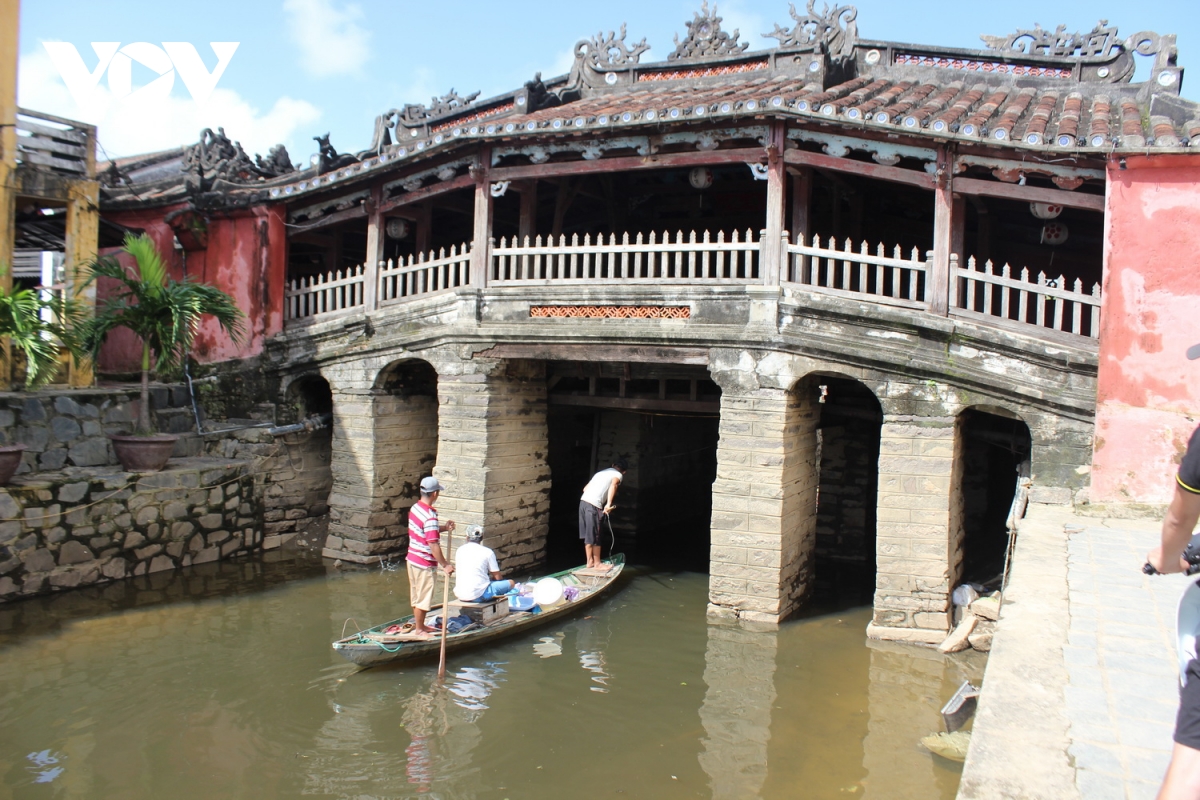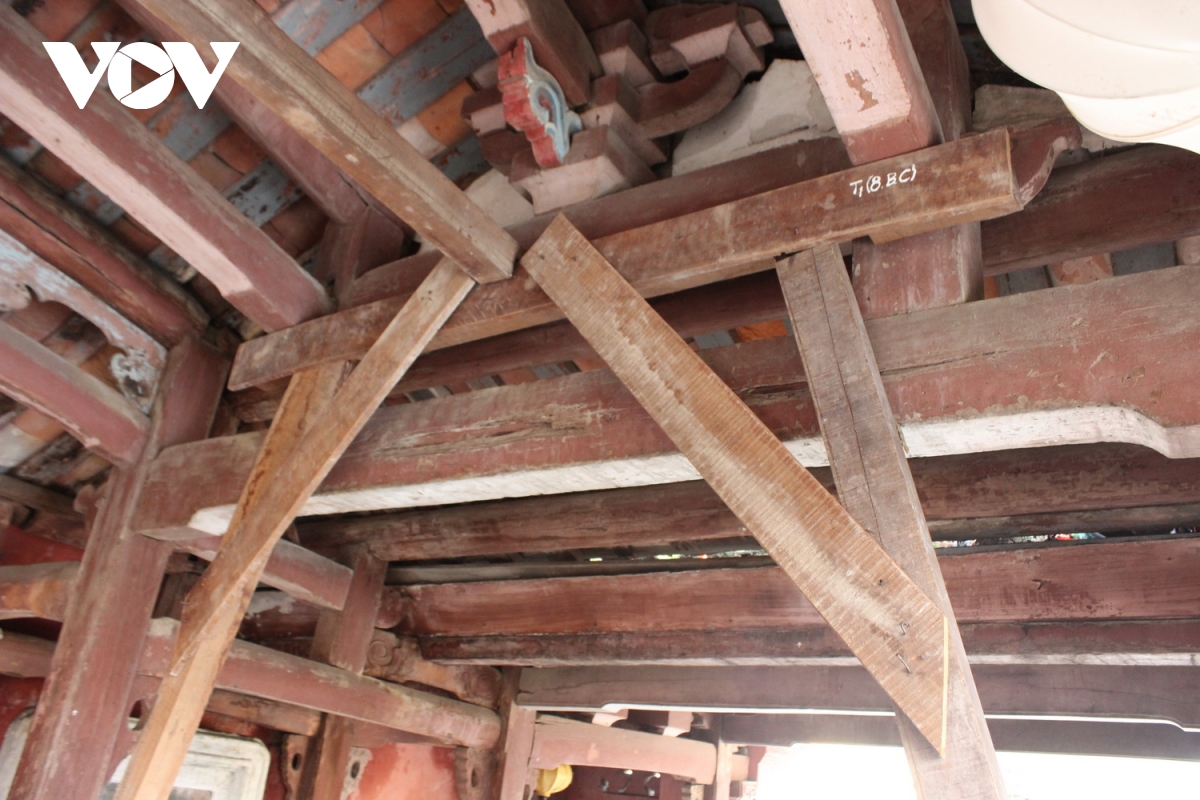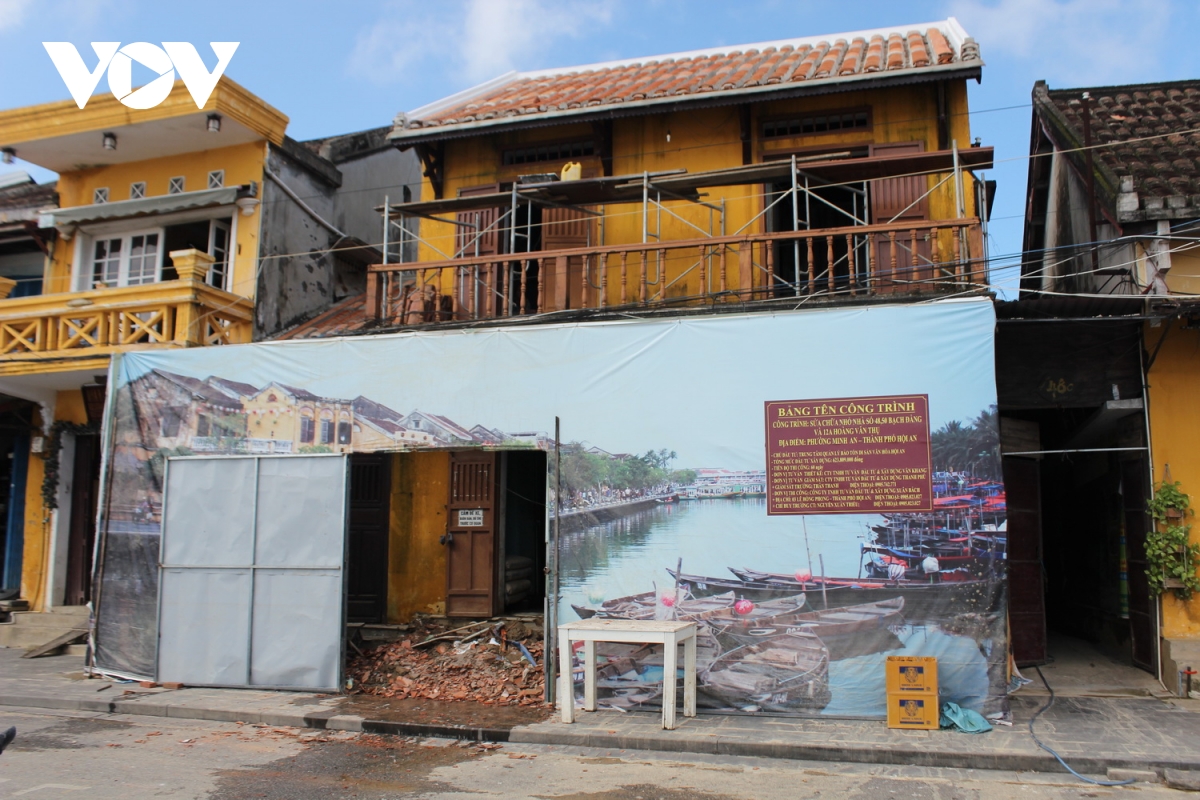Quang Nam faced up to six storms between September and October this year, causing severe floods. Many cultural and historic relics along the Hoai River in Hoi An City were put under water, deteriorating their condition.
The Japanese Covered Bridge, which is seen as Hoi An’s culture symbol, has been restored seven times. The bridge is located in a low area which is often affected by floods. Whenever being inundated, the bridge’s state worsens. At present, many bridge beams and pillars have been cracked.



The Japanese Covered Bridge in the central province of Quang Nam’s Hoi An City has faced more serious deterioration.
Pham Phu Ngoc, director of the Hoi An Centre for Cultural Heritage Management and Preservation said that the city had limited the number of tourists visiting the bridge to 20 only at a time to help protect the bridge.
The bridge has been listed among works in Hoi An to be renovated next year.
Hundreds of old houses and many other relics in Hoi An have also been in worse condition after being submerged by 0.5-1.5 metres after recent floods.

Many old houses and relics in Hoi An have also been in worse condition after recent floods.
Le Thi Dong who lives on Bach Dang Street said that her old house has been mostly flooded over the past two months, causing it to be rotten.
Hoi An is now home to around 1,400 cultural and historic relics and old houses. Since 2008, the city has invested around VND146 billion to restore 255 historical sites. Up to 70% of the investment is sourced from fees of entrance tickets to local historical and tourist sites.
According to Nguyen Van Son, Chairman of Hoi An City People’s Committee, the Covid-19 pandemic has hit the locality’s tourism sector. So, the city needs the government’s financial support for renovating such buildings.
The Japanese Covered Bridge was built by Japanese traders in the 17th century. It stretches 18 metres across a canal that runs into the Thu Bon River.
Hoi An was named as a UNESCO world cultural heritage site in 1998. Dtinews/VOV



